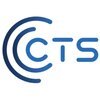GenC Elevate
GenC Elevate Interview Questions and Answers for Freshers

Asked in Cognizant

Q. You need to give a worker 5 grams of gold plate each day. What is the minimum number of cuts required to divide the gold plate so you can give the worker the correct amount each day?
Minimum number of cuts required to divide 5gm of gold plate into same amount for workers daily.
The answer is 4 cuts.
Each cut will divide the plate into 2 equal parts.
After 3 cuts, we will have 8 equal pieces.
The 4th cut will divide one of the 8 pieces into two equal parts.

Asked in Cognizant

Q. Write code to print prime numbers in a right-angle triangle format.
Code to print prime numbers in right angle triangle format.
Create a function to check if a number is prime or not.
Use nested loops to print the numbers in right angle triangle format.
Start with the first prime number and keep adding prime numbers to the triangle.
Example: 2 3 5 7 11 13 17 19 23 29

Asked in Cognizant

Q. Do you know the 4 pillars of OOP? Explain.
The 4 pillars of OOP are Abstraction, Encapsulation, Inheritance, and Polymorphism.
Abstraction: Hiding implementation details and showing only necessary information.
Encapsulation: Binding data and functions together to prevent external interference.
Inheritance: Creating new classes from existing ones, inheriting properties and methods.
Polymorphism: Using a single interface to represent multiple types of objects.

Asked in Cognizant

Q. What approach did you take to learn data science?
I took a structured approach to learn data science.
Started with learning the basics of statistics and programming
Took online courses and read books on data science
Practiced on real-world datasets and participated in Kaggle competitions
Joined a data science community to learn from others and share knowledge
Continuously updated my skills and knowledge through online resources and attending conferences

Asked in Cognizant

Q. Exception handling in Java. Try catch finally. Types of Exceptions ans etc.
Exception handling in Java involves using try-catch-finally blocks to handle and manage exceptions.
Java provides a mechanism to handle runtime errors called exceptions.
The try block is used to enclose the code that might throw an exception.
The catch block is used to catch and handle the exception.
The finally block is used to execute code regardless of whether an exception occurred or not.
There are two types of exceptions: checked exceptions and unchecked exceptions.
Checked ex...read more

Asked in TCS

Q. What is the difference between checked and unchecked exceptions?
Checked exceptions are checked at compile-time while unchecked exceptions are not.
Checked exceptions are those that are checked at compile-time and must be handled by the programmer using try-catch or throws clause.
Unchecked exceptions are those that are not checked at compile-time and can occur at runtime, such as NullPointerException or ArrayIndexOutOfBoundsException.
Checked exceptions are usually used for recoverable errors, while unchecked exceptions are used for unrecove...read more



Reviews
Interviews
Salaries
Users

















